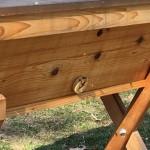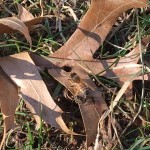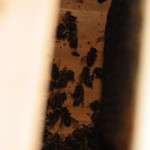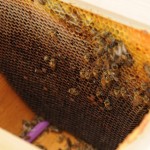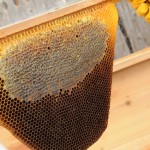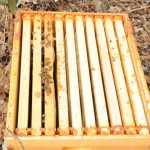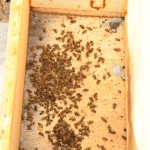Loss
It was really nice to attend the top bar beekeeping intensive weekend with Christy Hemenway of Gold Star Honey Bees. I got to meet other people who are interested in top bar beekeeping and more natural beekeeping. After speaking with Christy on the phone a bit last year, it was great to finally meet her. She also pointed me in the direction of some online support within the top bar beekeeping community. There are some Facebook groups for top bar beekeepers, some are international and some are regional.
On the last day of the intensive weekend, the temperature here warmed up into the 50’s. It was warm and sunny most of that day. I had asked my husband to message me in the afternoon to let me know if the bees were out flying. When he did, he told me that there were not any bees flying in our backyard. When the class was over, I decided to call Rachel to ask about the host hive. She went out to look at the hive and said that there was lots of activity. Bees were flying in and out of the hive and they were cleaning out dead bees. This was good to hear.
I called my husband afterward to ask him about the hives in our yard. He went out again and said that there was no sign of the bees. They had not been out and he said he didn’t see many dead bees on the ground outside of the hives. Now I was worried. Of course, I would get home too late to look so I would have to wait until the next day.
That Monday was 63 degrees! I went out to the host hive first. There was a lot of activity. The sun was shining and it was warm. The bees were flying and seemed happy. I looked in the observation window and I was able to see the bees moving around on the comb and cleaning out their hive. I decided not to open the hive, I didn’t want to break the propolis seal. They still have the large candy block in the feeder area, so I am hopeful that they have enough food.
Then I headed home to check on the hives in my yard. I put on my bee suit and got my hive tools. The first thing on my agenda was to look around the hive entrances, I was looking for flying bees and recently cleaned out dead bees. There was one flying bee around the Langstroth. That was strange to see and I needed answers. I opened the top bar hive first, I went slowly and spent time listening. I did not hear any buzzing. I went into the hive further and that’s when I realized that the colony was dead. My heart felt heavy as I looked further into the hive and found a large pile of bees. I decided to clean out the hive another day, so I closed it up for the day.
Then it was on to the Langstroth hive. Again, I checked around the front of the hive. The one bee that had been flying around was not there at the moment. I took the lid off and there were no bees to be seen in the top deep. After removing the top deep box, I found the pile of dead bees. I looked through the entire hive to see what else was there. The bees had plenty of honey and there wasn’t any evidence of disease. This was the same thing that I had found in the top bar hive. With a very heavy heart, I closed up the Langstroth hive.
I had been concerned about the bees in the top bar hive for most of the season. The colony stayed pretty small, but in September they did seem to have a good amount of honey. I was rooting for them to pull through and prove me wrong. The Langstroth colony had been strong, they had made it through the winter the year before. In the spring they were out foraging the moment the skunk cabbage was out. I wasn’t as concerned about them, I knew that they were strong.
The beekeepers association that I belong to had sent out information from the state bee inspector about having the dead bees tested. The only cost involved for me was the shipping. I shipped out a hundred or so bees from each colony and now I am waiting to hear back about what was the cause of death. After asking Best Bees again about the results from the sampling that they had taken in August, they finally said to me that there were 6 mites for the 25 bees that they had taken. The only other thing that they told me was that the bees were measuring smaller than what the “average” bees should measure.
Now that I know the two colonies are gone, I have made some different plans for this upcoming season. The Langstroth hive will be going back to Best Bees after I clean it out. I do not want to continue to keep the bees in a Langstroth hive, I want to move forward with all top bar hives.
In April, I will be moving the top bar hive from my back yard. I am going to order one more top bar hive from Bee Thinking and I will put the two hives at the farm. I have already ordered two packages of bees to install into the hives. I am going to keep the empty comb and most of the honey from my current top bar hive to give to both of the hives at the farm. This way the bees will have a bit of a head start for the season.
It will probably be good for me not to have hives in my yard this season. After all of the issues last year, I am ready to just enjoy my back yard and really focus on growing food. I am so glad that I get to continue my beekeeping journey in a way that will allow me to find peace in my garden.
Winter has now arrived here, we have snow on the ground and the temperatures have dropped quite a bit. I hope that this prompts the host hive to slow down, eat less, and be able to pull through the winter. Once it warms up enough for the bees to be out flying, I will check in on them. For now I am stuck with the unpleasant task of cleaning out two dead beehives and waiting to hear the lab results for what may have been their cause of death.
